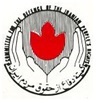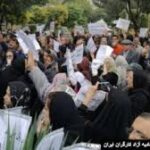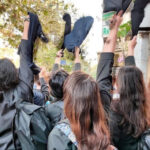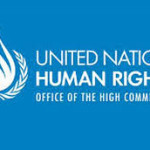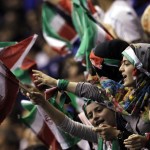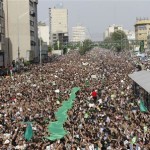
Iran on Wednesday detained at least 12 female activists in what rights groups say is an escalating campaign to deter protests to mark the anniversary of the “woman, life, freedom” uprising that swept the country last year.
The protest movement against clerical rule was sparked by the death of Mahsa Amini, 22, in the custody of the country’s “morality police” after an alleged violation of Iran’s conservative dress code for women.
The 12 women arrested in the Caspian Sea province of Gilan have histories of “anti-security activities,” according to state media reports on a statement by the Intelligence Ministry, which is affiliated with the Islamic Revolutionary Guard Corps. The ministry accused two of the women, without presenting evidence, of receiving money and training from Western security services, including Israel’s.Two journalists stand trial in Iran for stories that sparked protests
The women’s whereabouts and the exact charges they face remain unknown, and their families have had no contact with them, according to Shiva Nazarahari, an activist based in Europe who works with the Volunteer Committee to Follow-Up on the Situation of Detainees, an informal network that operates inside and outside Iran.
Nazarahari and other rights activists called the accusations baseless — but said they were part of an effort at suppression and intimidation seemingly meant to deter protesters from marking the first anniversary of Amini’s death next month.
“The regime is definitely frightened of the anniversary coming up,” said Hadi Ghaemi, executive director of the New York-based Center for Human Rights in Iran. “It believes there is a large appetite in the country for protests and resistance again. Otherwise, it would not be rounding people up.”
Amini’s death last September ignited months of nationwide demonstrations against the country’s system of clerical rule and gender discrimination set up after the 1979 revolution. Women and young people were primary leaders in the movement, which became defined by a popular chant: “Woman, life, freedom.” Images of women defiantly burning their mandatory hijab, or headscarf, inspired waves of solidarity demonstrations abroad.
The protests posed the biggest a crisis of legitimacy for the Islamic republic — and Tehran in response launched a brutal crackdown and internet outages. At least 500 people, and probably scores more, were killed, according to HRANA, a Virginia-based activist news agency. At least seven men have been executed for protest-related convictions. Thousands of others were injured or arrested.As water shortages intensify Iran’s heat wave, authorities shift blame
While daily demonstrations have died down, Iran’s clerical leaders have struggled to reassert control and enforce the hijab, amid ongoing frustration with the country’s collapsing economy, global isolation, and water shortages during a summer heat wave.
In recent weeks, Tehran has increased morality police patrols and deployed cameras and other forms of surveillance to catch women violating hijab rules, according to news reports. Shopkeepers, teachers and employers have been fined for violations and threatened by authorities if they do not enforce the requirements.
Iran’s parliament is expected to pass a contentious, more restrictive hijab law codifying many such intensified practices. The draft bill imposes strict penalties on anyone who violates hijab requirements or encourages others to do so, with punishments ranging from fines and prison to employment and travel bans.Iran’s morality police resume hijab patrols after reprieve during protests
The proposed legislation has sparked controversy in Iran, where some see the mandatory hijab, a pillar of clerical power, as having lost long-term viability in a society fundamentally changed by the protests.
Wednesday’s arrests came amid daily reports of the detention and sentencing of activists. Authorities have in particular continued to target members of the Kurdish minority in the country’s northwest, where Amini was from and the protests began. Abuse and torture are rife in Iranian prisons, according to Human Rights Watch, a leading rights group based in New York, and Iran’s judicial system is notoriously stacked against political detainees, in violation of international laws.
On Wednesday, Iran also sentenced prominent film director Saeed Roustayi to six months in prison for showing his film “Leila’s Brothers,” a drama set against the backdrop of Iran’s financial crisis, at the Cannes film festival last year without official permission. Last month, judges sentenced three prominent activists for not wearing the hijab and declared them “mentally ill,” part of a pattern of “weaponizing” the medical treatment of detainees, according to Ghaemi. Students at universities — which were a beating heart of the uprising — have reported an increase in threatening calls, summonses and interrogations by intelligence officials ahead of the anniversary, according to campus activists.
The trials of the two Iranian journalists who first broke Amini’s story — Niloofar Hamedi and Elahe Mohammadi — are also ongoing, behind closed doors. They are accused of “colluding with hostile powers” — a charge they deny, according to their families, and which could carry long sentences or the death penalty.



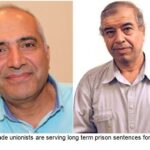


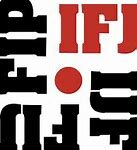




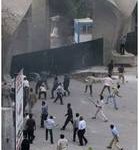
 Posted in
Posted in 